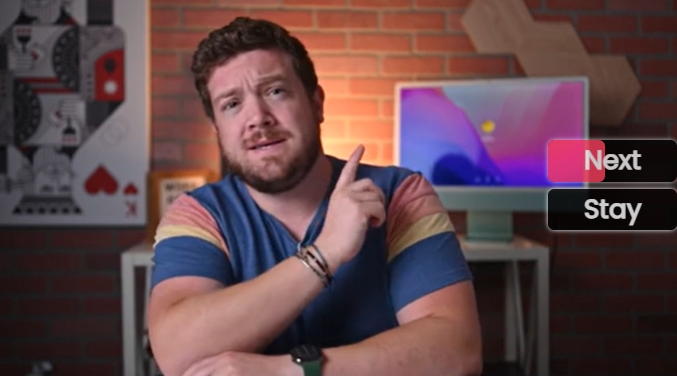[CNMO Technology] Today, when technology companies are flocking to make mobile phones and cars, a 3D printed ring in a Cornell University laboratory seems to be quietly rewriting the way humans communicate with machines.
This smart ring, called SpellRing, uses a coin-sized volume equipped with an acoustic sensor, a gyroscope, and a deep learning algorithm to turn 26 sign language letters into a pass to the digital world. It does not pursue heartbeats or heartbeats, but aims at a more fundamental need – to make silent body language a direct bridge for human-computer interaction.
UN Secretary-General Ban Ki-moon
Traditional sign language translation equipment often resembles a bulky medical device: it costs thousands of dollars, is complicated to operate, and requires reliance on third-party equipment for transfer.
SpellRing has torn down this barrier with a $30 prototype, which is even cheaper than ordinary Bluetooth headsets. When tested, it can spell 20,000 words with 92% accuracy. This is due to the double verification of sonar images and gyroscope data. As the author of the paper, Hyunchul Lim, said: “ASL (American Sign Language) is not a complete grammar before hand gestures.”
This alternative positioning of technology allows the hearing-impaired community to have “digital expression sovereignty” for the first time. With this cheap device, a deaf-mute delivery man can respond to instructions with voice, and a hearing-impaired student can ask questions in real time in the classroom with sign language – when sign language input can directly drive mobile phone navigation, web search and instant messaging, people with disabilities are no longer “visitors” in the digital world, but real masters.
More critically, the centralized approach makes it possible for the technology to penetrate developing countries, where most of the world’s hearing-impaired population is concentrated.
Experience and compare mobile phone virtual keyboard
Those who are snapping their thumbs in the subway may not realize that their “hand speed” is being crushed by a primitive way of communication.
What is the biggest pain point of the mobile phone virtual keyboard? When the finger “blindly cycles” on the screen, you always have to grab the screen to confirm. Especially when encountering complex words, you have to slide your fingers on the keyboard repeatedly, and you may press the wrong key if you are not careful. Not to mention one-handed operation while walking or riding in a car.
SpellRing is designed to “make Japanese speak”. It is worn on the thumb like a ring, and directly converts ASL letters into text by capturing audio waves and angle data of hand movements. Tests show that familiar users can spell faster with their fingers than with pregnancy.
The virtual keyboard has a fatal flaw: you have to grab the screen to operate it. Whether you are replying to messages, posting to Moments, or even searching for information, the mobile phone screen is like a “black hole”, which always means that your attention is sucked in.
The input method of smart rings is completely different. It is like installing a “translator” on your hand, and you can even input information while walking. In the test, volunteers did not need to look down at the screen when performing web searches and navigation operations on their mobile phones with SpellRing – as long as their fingers moved, the text appeared automatically. This “liberation reading” experience is especially important for the deaf-mute community: they can finally interact with digital devices as naturally as speaking.
I believe every mobile phone user has experienced the problem of “accidental touch” of the virtual keyboard. Especially for small-screen mobile phones, it is easy to accidentally press the wrong key and have to delete and correct it. What about the accuracy of sign language input method?
According to the Cornell team, SpellRing achieved a recognition accuracy rate of 92% in the test. This is due to the deep learning algorithm, which can accurately capture the threat score of each link through sonar images and sensor data. For example, the difference in hand shape between the letters “B” and “P” can be recognized instantly by the ring. The more familiar the user is, the higher the accuracy rate will be – just like practicing the piano, the memory formed by hand movements will hardly make mistakes after input.
Currently, SpellRing still mainly recognizes single letters. The advantage of the virtual keyboard is that it can directly input complete commands, otherwise it may become a breakthrough in the future to combine the two.
Although virtual keyboards are popular, they are a “barrier” for many people. Deaf people rely on translation software or other people’s help when communicating in sign language; people with hand movement settings have a harder time using virtual keyboards. The emergence of SpellRing has made technology truly “supportive”.
What can it replace?
When the media hotly debated whether “smart rings can replace mobile phones”, the SpellRing team’s answer was clear: “We rebuild to make better input tools.”
This reveals the survival philosophy of wearable devices – they do not need to be all-around terminals, but should focus on solving specific pain points. Just like wireless headphones did not replace mobile phones, but redefined interaction; smart rings may never replace mobile phone screens, but they can make human-computer dialogue happen at the moment of finger trembling.
The real ambition lies in the technology roadmap: the idea of linking with AR glasses implies the mixed reality interaction of “mammals + vision”; the design of unified circuit boards and curved batteries points to truly seamless wearing.
One day in the future, we may need to take out our mobile phones, just adjust the ring in the air, and use all operations instead of desktop projection. But now in the completion stage, the prototype of the external circuit board reminds us: miniaturization, remote control and privacy security, the reality still stands between the ideal and the three mountains.
Final Thoughts
The most profound revelation of SpellRing may not be suitable for its precise wedding gift, but it makes it regain the “presence” of technology. The best interactive device should make people forget the device – just like breathing natural body language. When a ring can use sign language to cover physiological barriers and express the universal language of the digital world, it not only serves the disabled community, but also asks property rights: Are we separated from the screen and the body, replacing the most authentic way of human beings?
The technological evolution that maintains silence will eventually make the word “barrier-free” a thing of the past, because truly equal technology never needs “special equipment” – it should grow into the natural appearance of humans.
All rights reserved. No reproduction without permission





